iRobot Scooba: experience of using and solving common problems of a washing robot vacuum cleaner
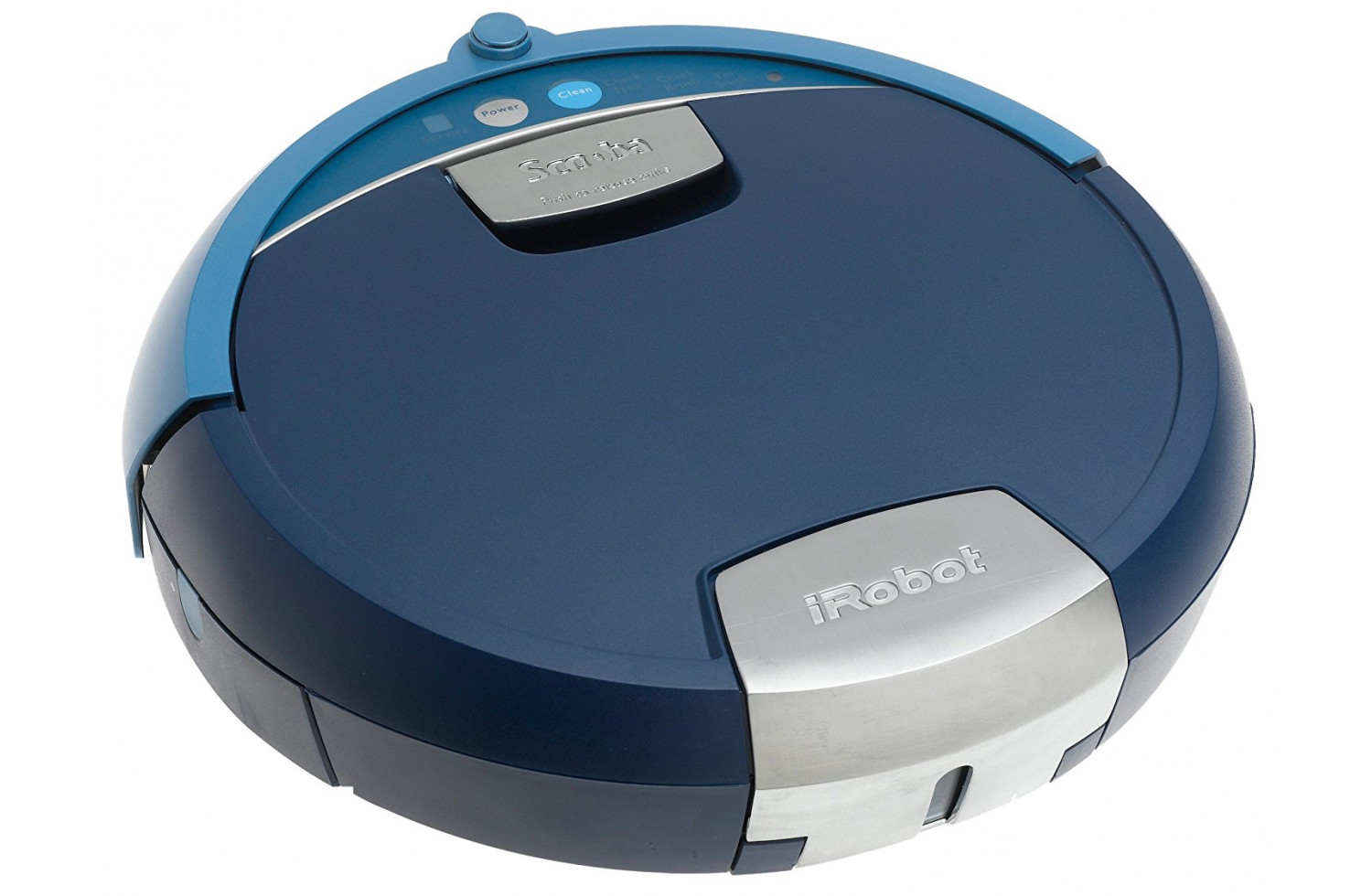
iRobot Scooba (models 5800, 380 and analogues look almost identical)
When I first heard about the robot vacuum cleaner, I immediately wanted to buy one to test it in “field conditions”. I read about them somewhere in 2010, and after a while I managed to fulfill my little dream. Then I randomly met the manager of the company-distributor of products iRobot, and I was offered with a good discount to take the bench Scooba 5800.
Without thinking twice, I agreed, brought the novelty home, tried it and ... the robot fully met my expectations. He was washing the floors just perfect, anyway, much better than I do, even when I try hard. Under the cut - a few more memories, experience with the robot and the solution of several common among all Scooba "iron" problems that lead to the inoperability of the device.
Some more memories and Scooba performance evaluation
The robot I bought has successfully worked for several years. Then it seemed to me simply amazing that such a complex device works without any problems, despite the daily contact with water, which is simply destructive for any electronics.
')
He worked exceptionally well - laundered almost everything, leaving behind a perfectly clean floor. I forgot what mopping is. He even laundered everything in the common corridor of my house, which the residents did not wash, because the corridor was common, and the cleaning lady from the communal services could not reach him because of the installed doors. In general, perennial dirt and dust (of course, there were no straight pieces of dirt, otherwise I would not scoff at the device) was washed in just one session of cleaning the robot lasting about an hour.
Yes, the robot does not touch the corners, leaving small dry areas the size of several centimeters. But compared to the usual quality of manual floor cleaning, it’s just space. It works especially well if you add a little detergent (you can buy a specialized iRobot, or you can add a couple of drops of the usual one, the main thing is not to foam too much, otherwise the robot will not be able to work normally).
Disadvantages Scooba 5800 and the honorable death from water
During this time, revealed a couple of flaws Scooba. The first is a plastic lock-handle tank robot. This handle fixes the tank. And it is completely plastic, despite the fact that the pressure when pressing on the handle should be sufficient to open the lock and the tank can be removed.
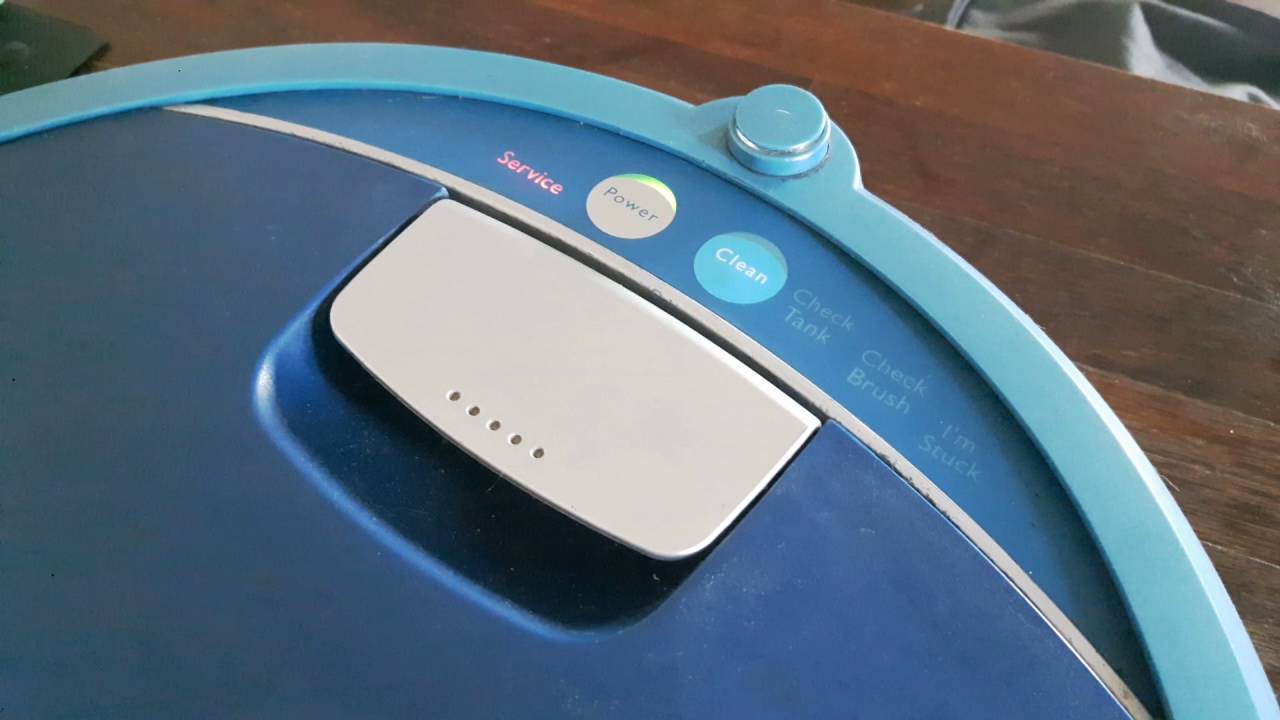
That same pen. By the way, her 3D model for a 3D printer is on the network on Thingiverse
I understand everything, but this pen fails for a year or two (for someone, and in general for several months). Perhaps this is deliberate obsolescence, although, rather (judging by the reliability of the robot itself and its consumables), it is simply an oversight of the developers.
The second drawback is that the robot battery lost relatively quickly the capacity of the battery, Ni-Mh by 4.5 Ah. Yes, instead of a lithium battery with a robot, a battery with “memory” and relatively fast degradation was supplied. I had to buy a battery, and then I left somewhere for a few weeks.
Upon return, it turned out that the robot does not wish to continue its career path. He started, crawled a little on the floor and almost immediately gave an audible signal about the problem. There was no time to understand, the device seemed very complicated (it's a robot!), So I just left it alone (but did not sell it).
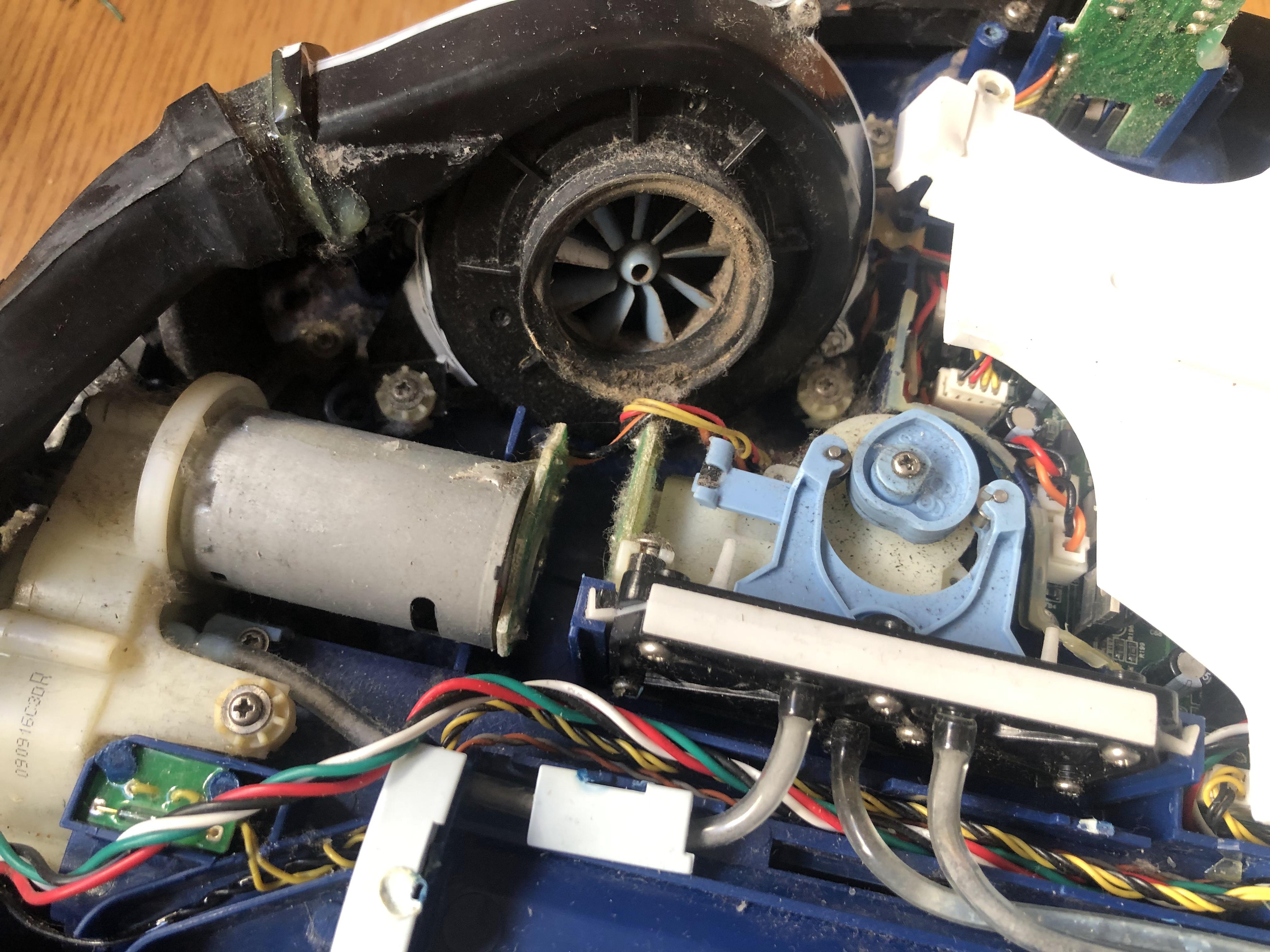
IRobot Scooba Vacuum Turbine
A year later, having found time to sort it out, I understood what his problem was. It turned out that the turbine of the washing system, which chased the flow of water and air through the robot, has stalled. She just dried up and could not start. I disassembled the robot, slightly moved the blades of the impeller (it really dried out a little), assembled it, and it all worked again. But the joy was short-lived - I bathed the robot in the water, entirely, and here its subtle nature could not stand it anymore.
As I recall, this happened in 2013.
New - well forgotten old
Over the past few years, I moved to another country and changed several apartments. All this time it was not up to the robots, although lately I remembered my Scooba, my floors, and I wanted to delegate the washing duties to the robot.
But now for some reason it became a pity for the money, because even a used Scooba model in its normal state costs about 150 euros (it can be found cheaper, but no one guarantees the operation of the device). In the end, I found a compromise with my own greed and I decided to try my luck by buying another Scooba (in addition to the one already in place) inoperable to repair. The idea was to use parts from one robot to solve problems with another.
Nevertheless, over the past years, a lot of material has been accumulated on the Web about repairing these and other robots, and I also have added repair experience. And I ordered the Scooba 380, which was sold for a ridiculous € 35, with battery, brush and filters.
Characteristics of the 380th model
- Type: Robot
- Sensors: optical
- Cleaning: wet
- Dust collector: cyclone filter
- Power control: no
- Cleaning zone limiter: virtual wall
- Modes of movement: spiral, zigzag, along the walls
- Modes of cleaning: local cleaning
- Charger Installation: Manual
- The area treated on a single battery charge: 80 m2
In addition, I asked my relatives to send me an old Scooba 5800, which was still gathering dust in an empty apartment in another country.
We collect from two robots of one
Models 5800 and 380 are almost completely identical, only the “brains” differ a little, the 380 robot, as a more modern one, removes a little better, plus it treats the battery more carefully. Therefore, it was calculated that if a purchased robot has something broken, it will be possible to replace it with spare parts from 5800.
The new robot turned out to have a broken water tank - there was a large crack on the side that let water through. It could be stuck, but the view is not the same, so I took the tank from the 5800 model.
In addition, the purchased Scooba also had a troubled impeller. If I hadn’t dealt with the first robot, I’d probably have lowered my hands and put the second robot aside to get dusty, upset because of a stupid purchase. But I already knew what the problem was, plus I knew how to solve it without disassembling the robot.
It is necessary to fold the dense fabric in several layers and lay it on the floor. Then take Scooba, put it on its side, where the turbine is located (if you look at the robot from above, this is the left side), raise it by 2–3 centimeters and let it fall so that it falls on the cloth. The device itself is strong, such a fall does not threaten him, but the impeller under the influence of vibration is shifted and then, after adding water to the system, begins to work. If this method did not help, you can still return the robot to its previous position, and in the same way lift it by 2-3 centimeters, then release it so that the robot falls onto the fabric.
Everything turned out, the impeller earned. I pressed the cleaning button and saw ...
Death dance scooba
So called circular erratic movements of the device, which after a couple of minutes of activity stops and signals a problem with the brush (which is usually in perfect order).
I turned off the robot, being upset, and began to search the Internet for information about what can be done. After reading a couple of hours, I tried to turn on the robot at random again, and he started working by himself. The battery lasted 10 minutes, but it functioned normally! For two days I was happy with the clean floors, and then one fine morning, filling the robot's tank with water and running it to clean, I saw the same dance of death (it is also called Scooba Circle Dance).
At one of the American forums dedicated to robots, it turned out that there could be two reasons. The first is the failure of the IR sensor of the robot wheel module. It stops giving a normal signal and the wheel turns much faster than usual, which leads to circular movements, because the second wheel works at normal speed. The robot seems to be going crazy, because the computing unit simply does not understand what is happening.
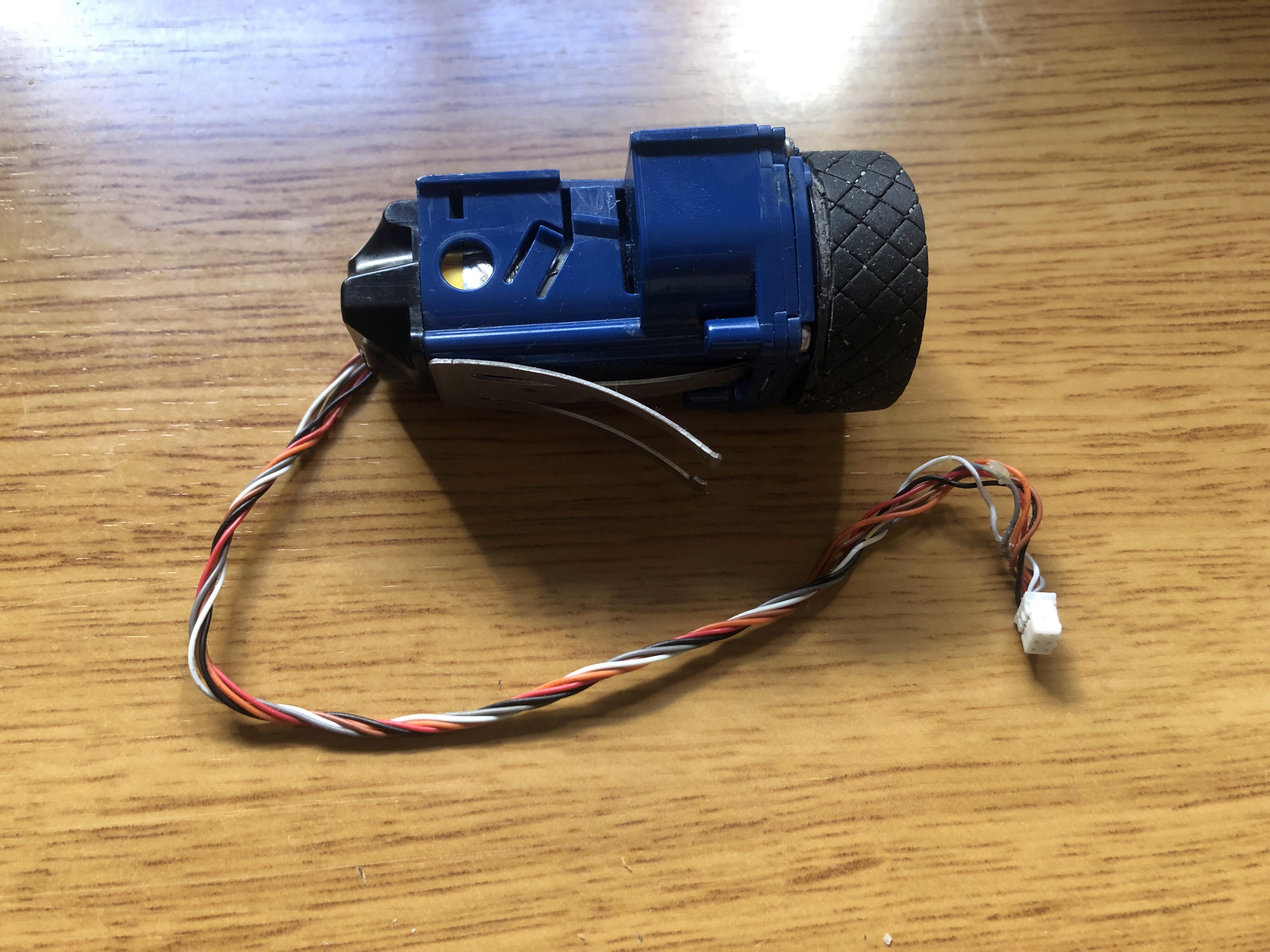
Scooba wheel module
The second reason is the failure of some elements on the motherboard that are being treated, but for this you need to be a good electronic master. An ordinary person, albeit with the experience of soldering, can not cope - to find the problematic element is not so simple. Need to know where to look.
Decision
Hoping for good luck, I decided to just replace the wheel module and then check how everything works. At one of the forums I met another solution - just to solder one of the module wires, so that it goes directly from the cathode of the LED to the connector.
It was possible to try, of course, but did not want to disassemble the robot, remove the wheel module, solder it, assemble it and then discover that the problem had not gone away. We all have no time left, but the robot vacuum cleaner is still not AK-47, so that it is constantly dismantled and assembled. Many plastic parts, which eventually become shabby. And if one robot dismantles one disassembly / assembly, the robot will survive, then there is no guarantee that it will survive the second.
By the way, already during the first disassembly procedure it turned out that one of the plastic fasteners of the wheel flew off - it just broke off. The blessing that the module normally can keep and with one fastening. If two had broken off at once, then the robot could have been thrown away. Glue won't help.
Below is the process of disassembling the robot and removing the wheel module. The video turned out so-so, but gives a general idea of the structure of the robot.
And here are photos of the disassembled robot and wheel module with the IR-diode mentioned above. Apparently, it is clean (some users of the forum from which I scooped information, helped by cleaning the element). So the problem is not in the dirt, but in the degradation of the element (90%, which is the case).
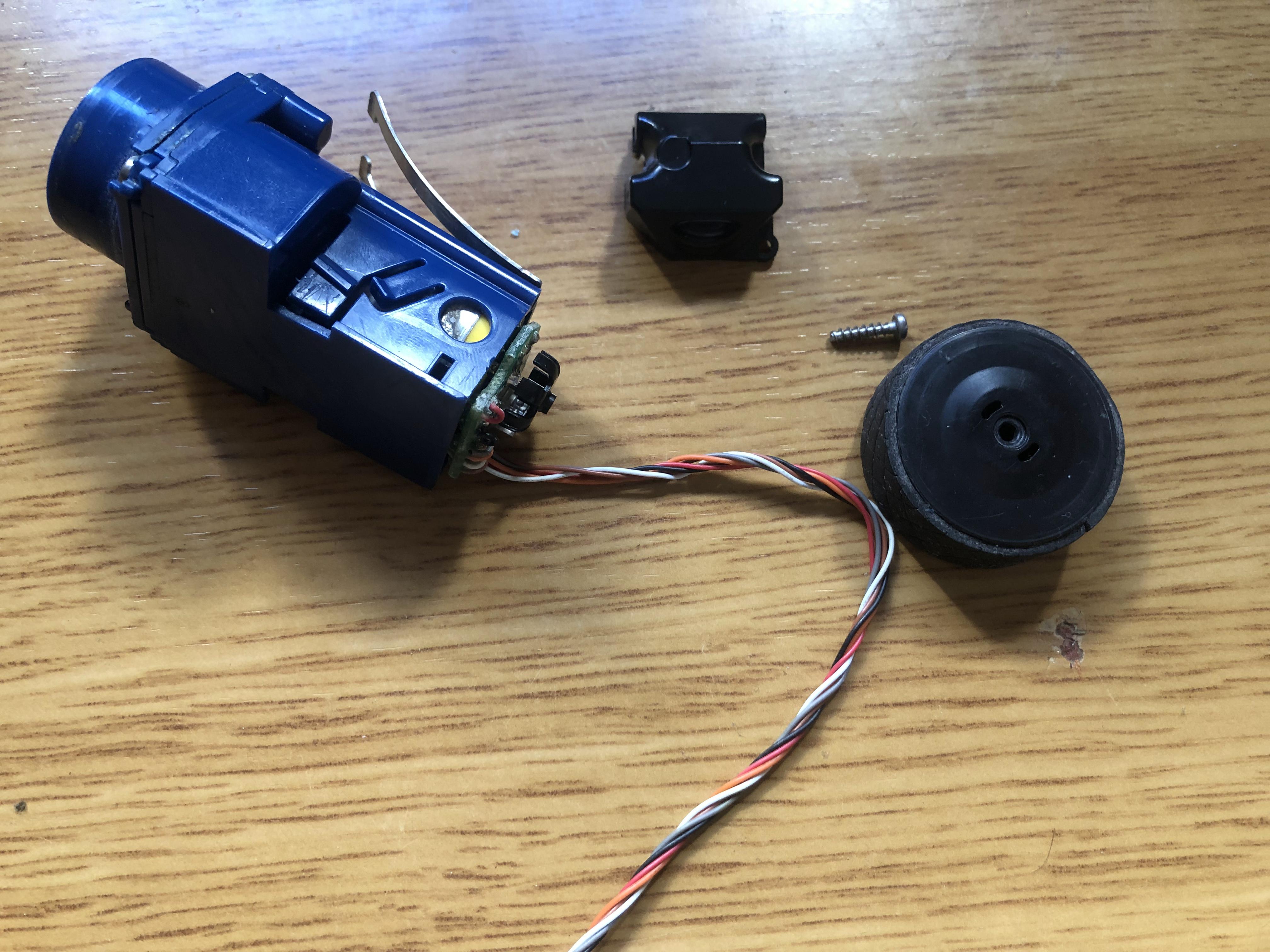
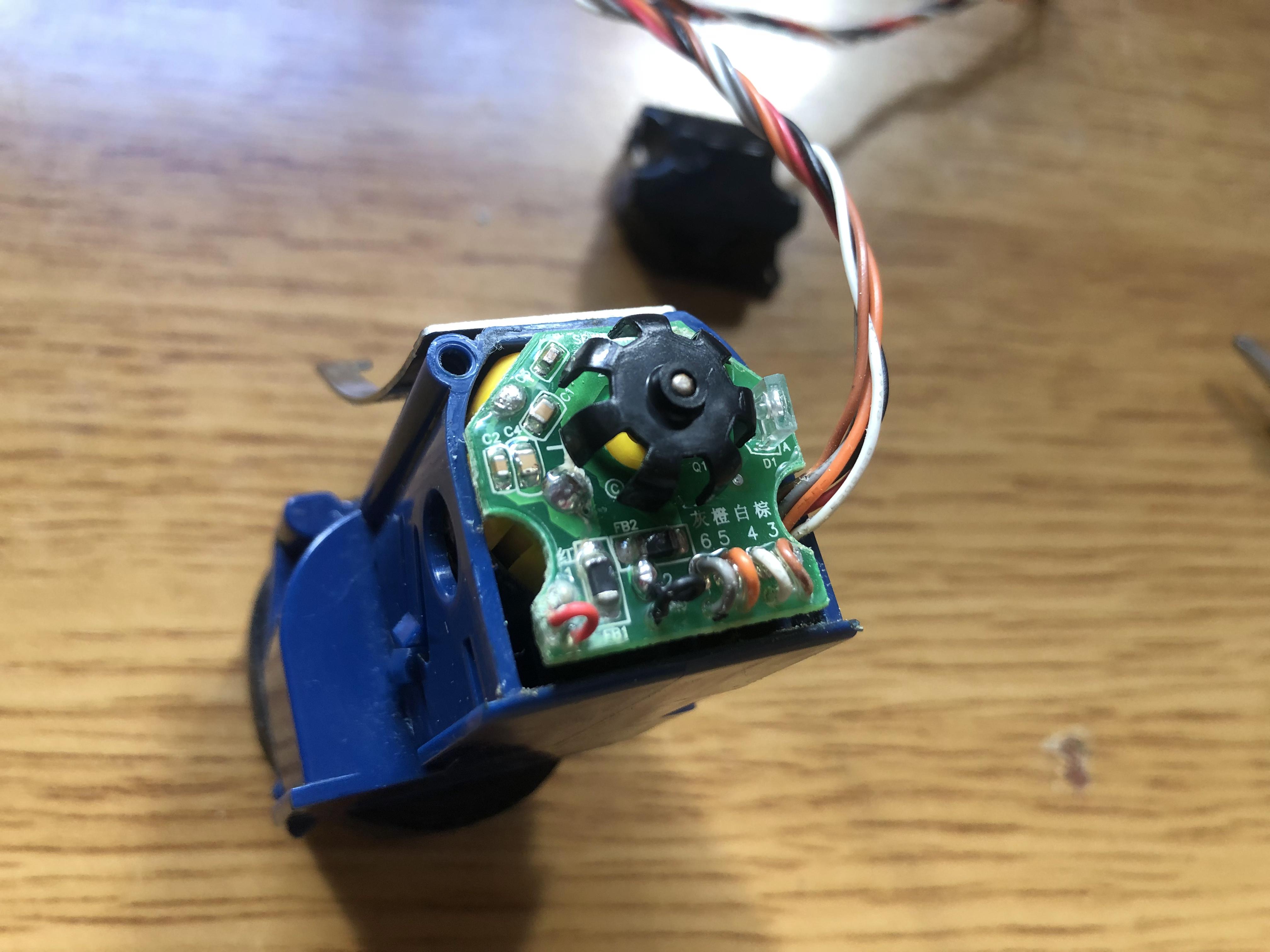
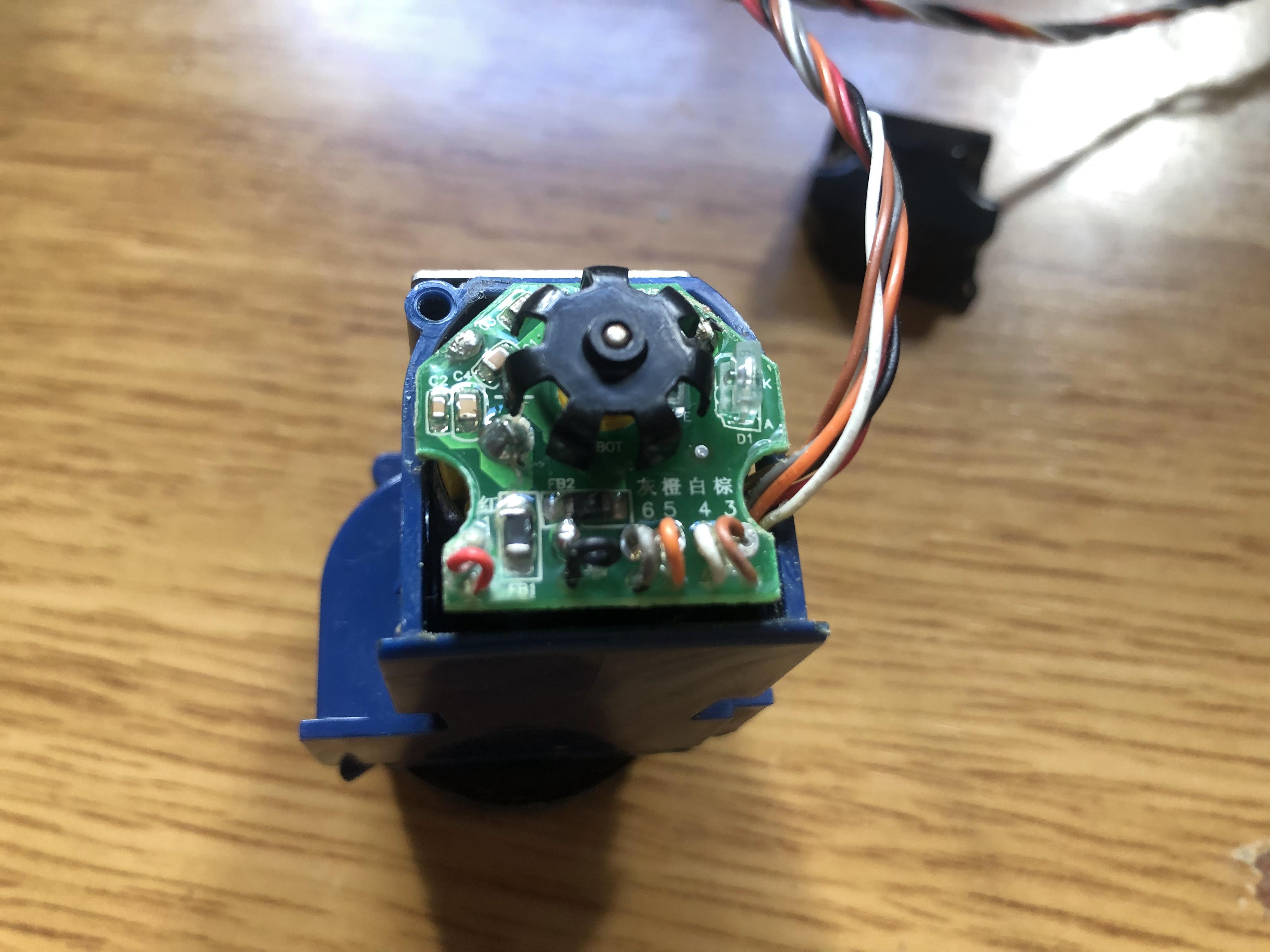
And a few more photos of the inside of the robot:
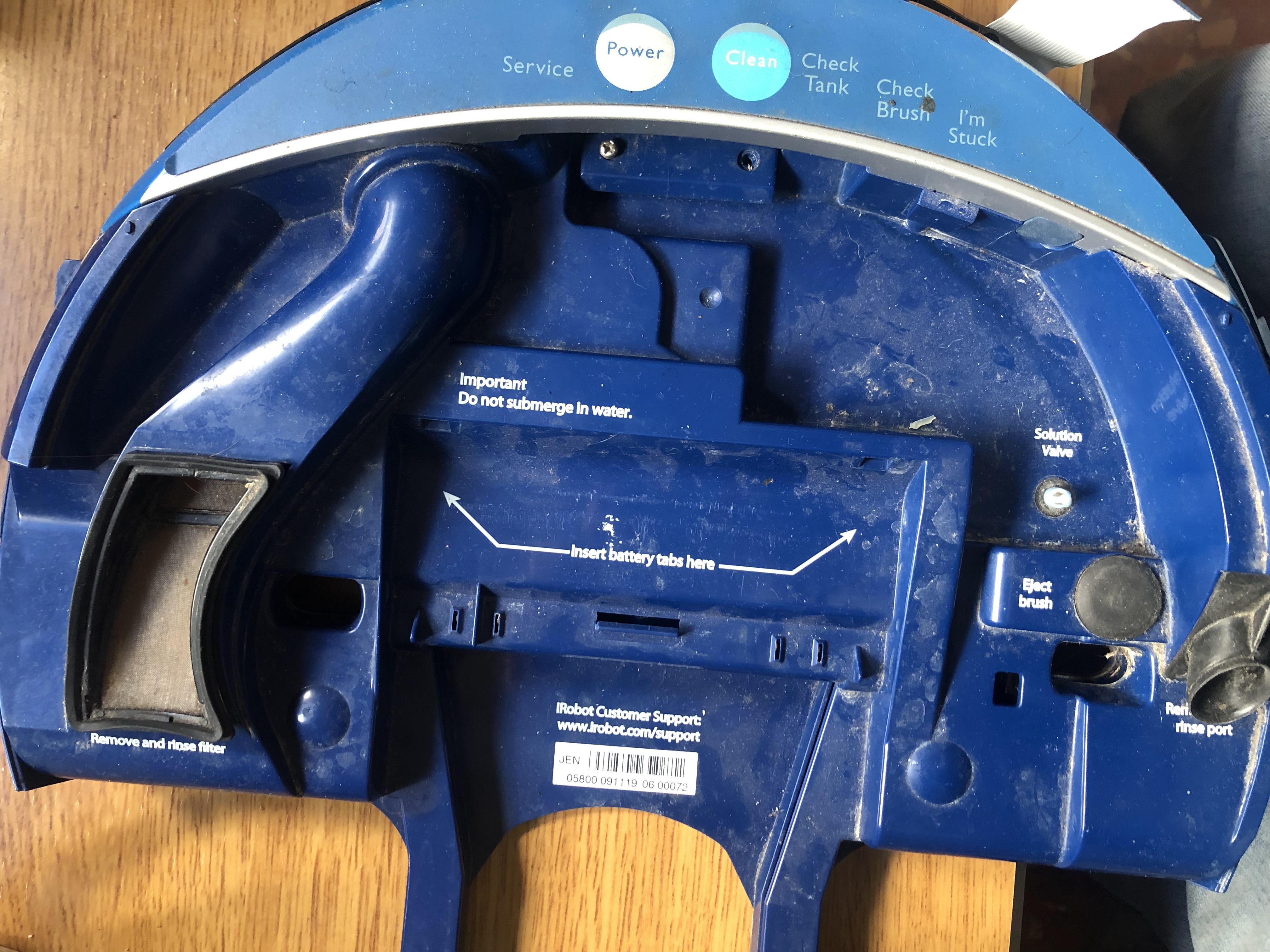
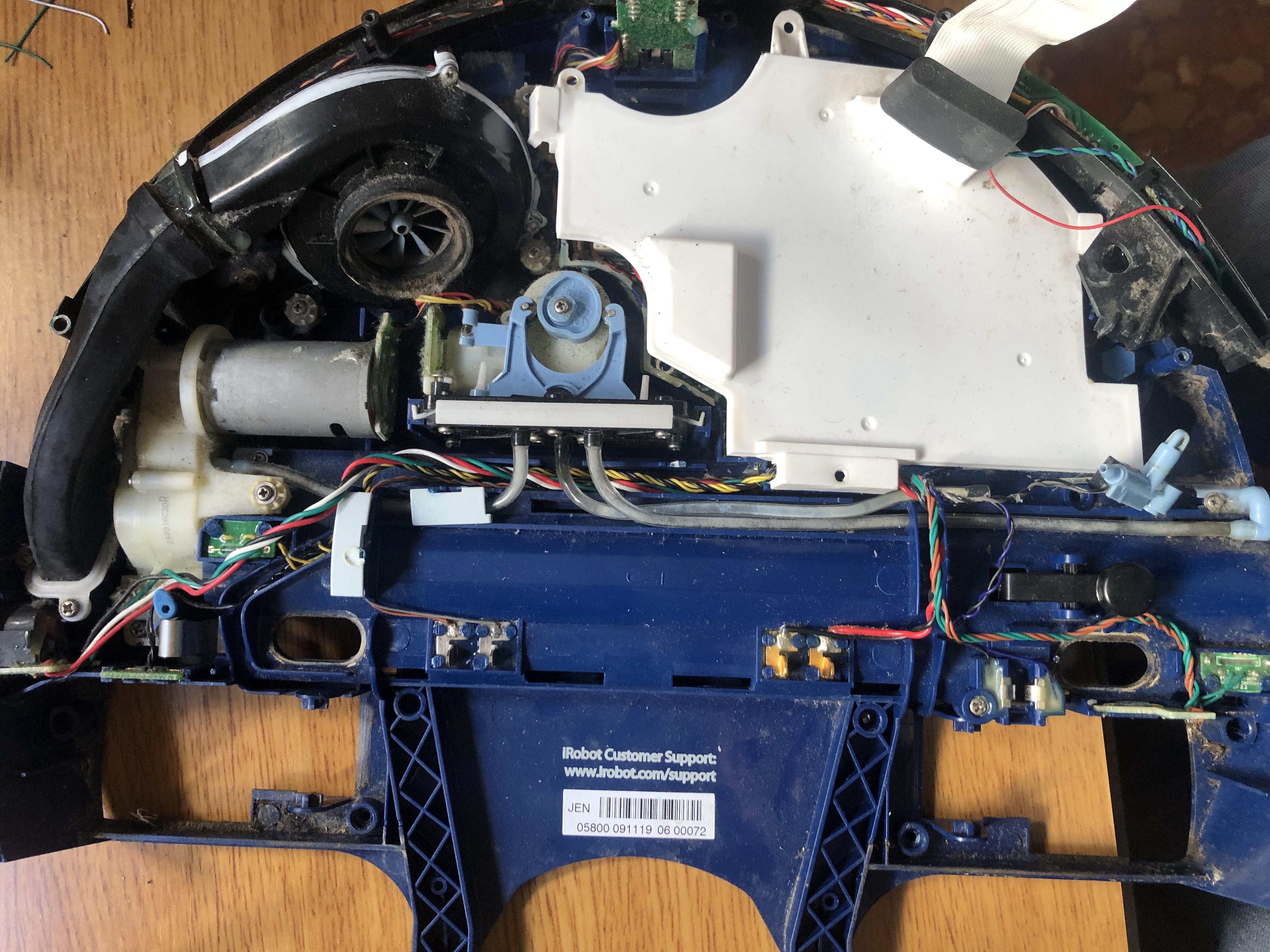

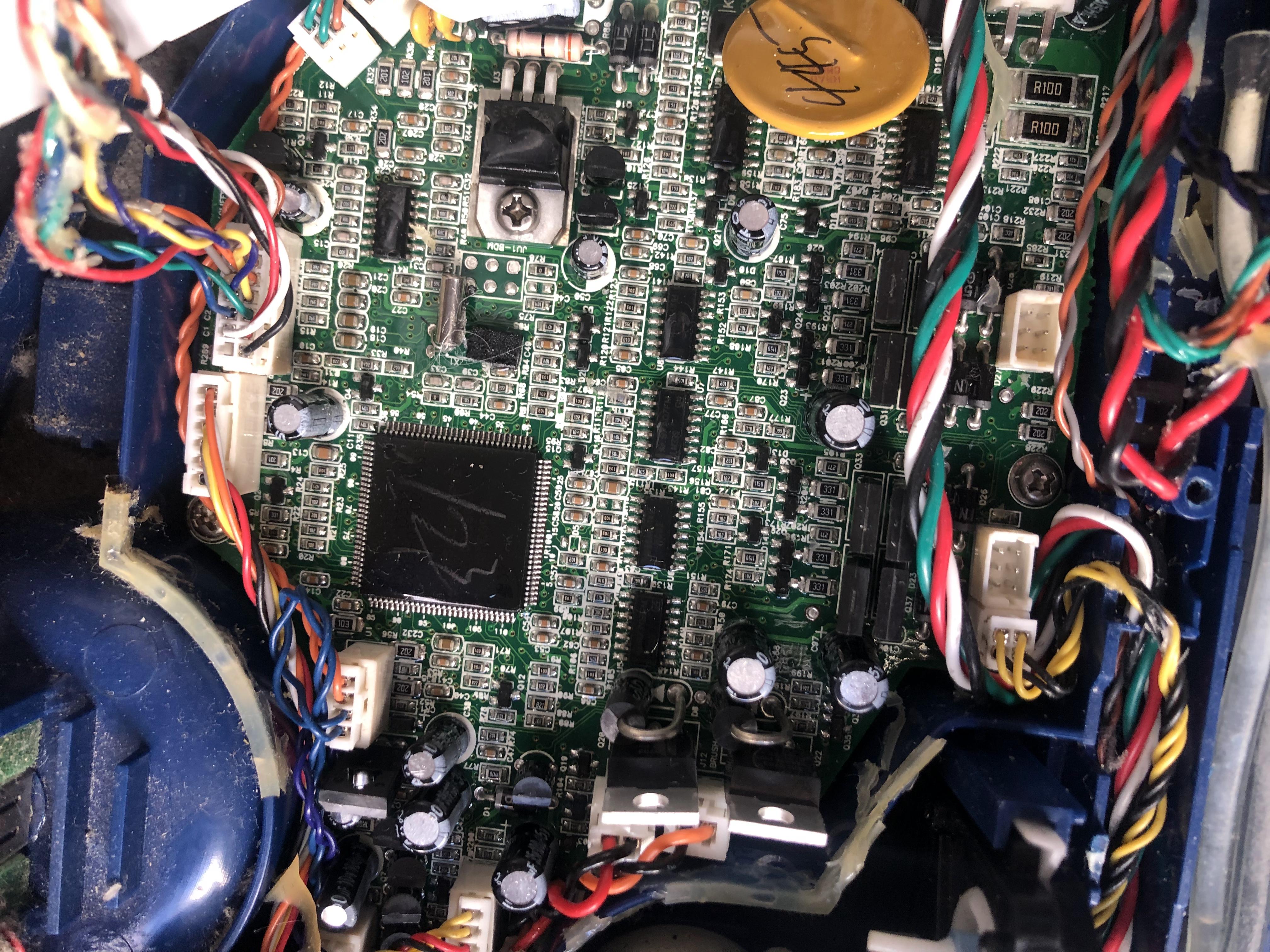
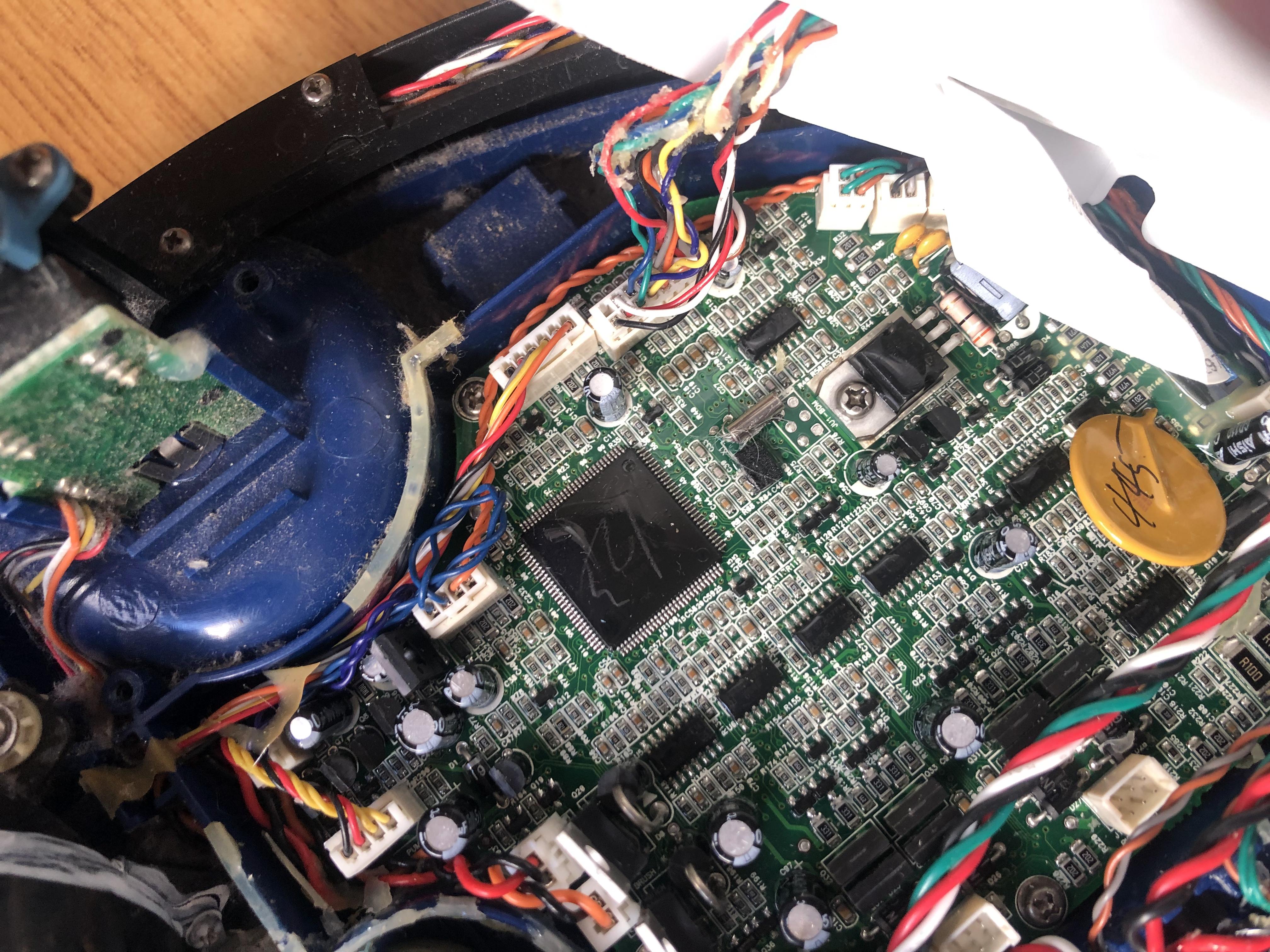
And finally, an example of proper operation of the robot after assembly:
Solving another problem - batteries
So, I had two batteries. The first is the one that arrived with an emigrant robot from my old apartment. The second is the one that came with the purchased robot. Both were almost dead.
I tried to keep the batteries on recharging for a long time (night), but there was almost no hope of recovering them. After all, it is Ni-Mh, these elements deteriorate very quickly. If to take into account that my first robot stood idle for about 4 years, then it was possible to simply give up on this battery.
I thought and was wrong! And twice - both batteries were able to revive. At first I tried to use the smart IMAX B6 charger. He honestly charged the batteries, but they were enough for 10-15 minutes of the robot.
So, both batteries were restored in quite an unexpected way. First one, and then the second battery I installed in the first robot, which was not on charge. This is done in order to quickly discharge the battery. Even with the robot turned off, there is some kind of energy consumption (the board is not completely dead). After waiting for the voltage drop across the terminals from 16 to 7 volts, I connected one of the batteries to the second, working robot. Then put the robot on charging.
The LED blinked faster than usual, which meant the activation of a special 16-hour cycle for charging new batteries provided by the developers of iRobot. Also, this mode starts if the battery is discharged to 7 V. Having left the battery charged for 16 hours, I achieved almost full recovery. Included in the morning, the robot worked for about an hour. And, as it turned out, it was a battery from my first robot, the 5800, which stood idle for about 4 years! In all the forums they wrote that only a few months is a sure death for the Scooba battery, and see.
The second battery did not help. But I still tried to charge it, tried to discharge it again. In the 16-hour cycle, the robot did not enter with it, but after a couple of days I once again left it for the night. In the morning I tried it, and it turned out that now she now also has about an hour of battery life. As a result, I had two batteries, which work almost as much as new ones. The price of a new one is about 40 euros, I paid the same for the second robot. I did not have to buy batteries, which I am extremely happy about. Well, if they fail, I will try to make a Li-ion battery from new cans of used laptop batteries. I hope in the near future I will not need to do this.
And now what?
The robot washes the floors in the entire apartment for about a week, during which time I did not notice any failures. Perhaps it will be enough for a short time, something else will fail. But I have spare parts - the first robot, model 5800! So I look into the future without fear, in the near future I will not have to wash the floor. Anyway, I hope so.
Source: https://habr.com/ru/post/441844/
All Articles